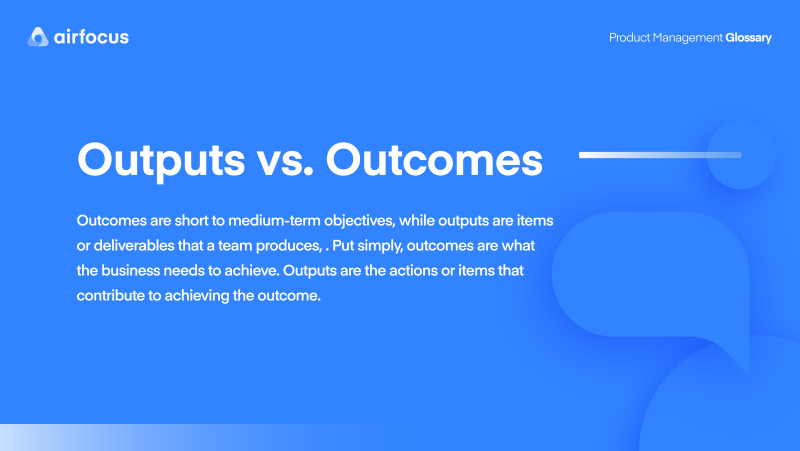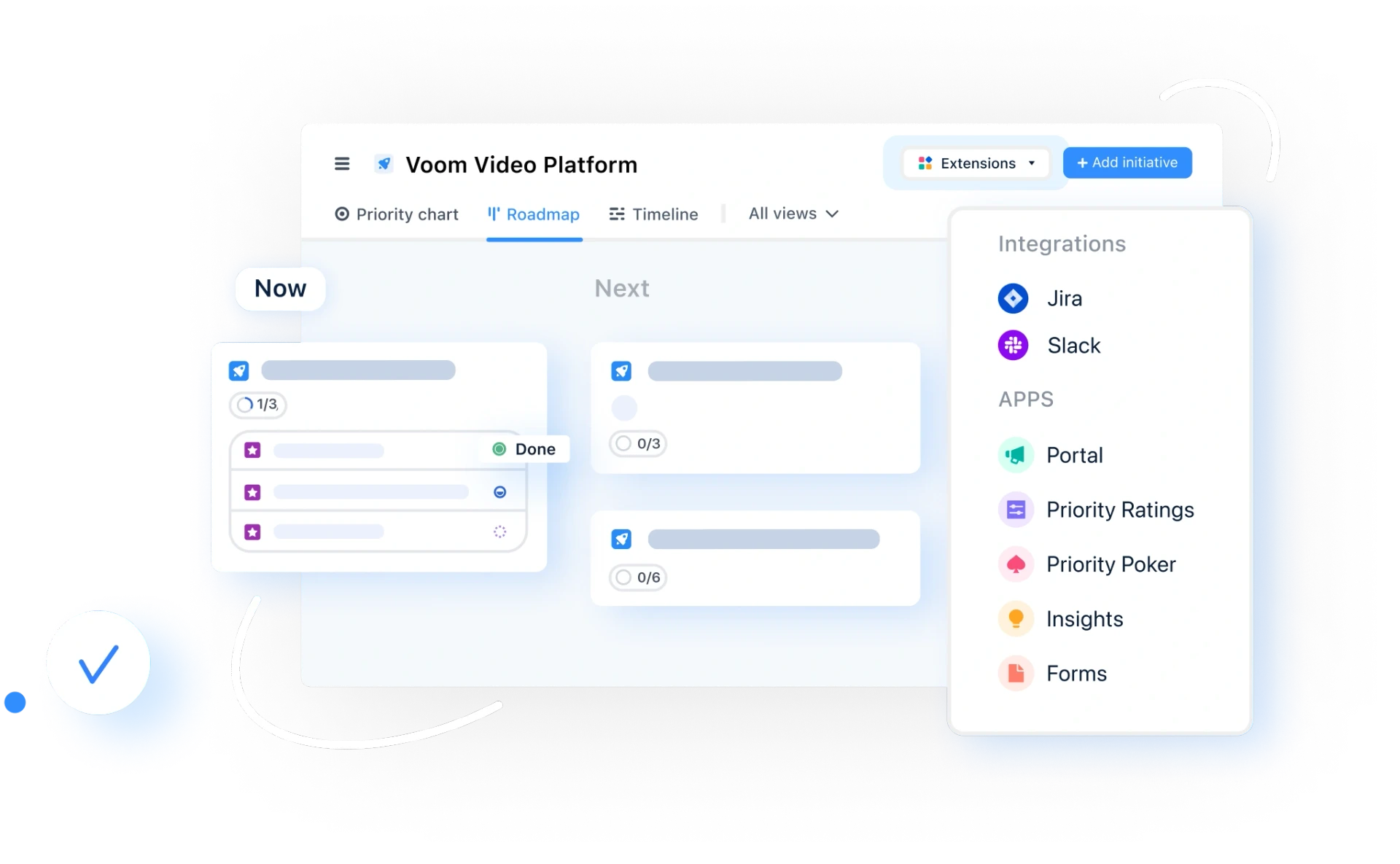Outputs vs. Outcomes
Outputs vs. outcomes: What is the difference?
Definition of outputs vs. outcomes
Outputs are items or deliverables that a team produces, while outcomes are short to medium-term objectives. The words “outputs” and “outcomes” are often thrown around with little context to help define what each word means. This has led to many people using both terms interchangeably. However, outputs and outcomes are entirely separate measurements
Outputs are actual items that a team produces, often referred to as deliverables. Outputs are a purely quantitative measurement. They are simple to define and achieve because the feature or product psychically represents the result. Outputs can be combined to achieve the intended outcome; however, not every output will contribute to the outcome.
Outcomes are short to medium-term objectives that your business is looking to achieve. Outcomes are both qualitative and quantitative metrics that represent the business’s goals. They usually represent the benefit your customers gain from the products you’re creating. For example, a business outcome could simply be “increased customer satisfaction.” Outcomes drive business strategy and influence outputs.
Put simply, outcomes are what the business needs to achieve. Outputs are the actions or items that contribute to achieving the outcome.
Logic model
A logic model describes the project outcomes and the steps required to achieve those outcomes. It’s a recipe that teams can follow to achieve the intended outcome. Logic models can be used in a wide range of sectors and they show how your product or program should work.
A logic model should clearly define the inputs, outputs, and outcomes of the project and explain the project's thought process.
Output vs. Outcomes vs. impact
Outputs are the things that a project creates. These are any deliverables the development team produces, such as features, services, and the final product. They’re usually easy to measure because there is solid evidence with each completed output.
Outcomes are the overall goals for a product which often include customer-focused objectives. They can be more challenging to measure than outputs because they often relate to an individual’s perceptions or emotions rather than tangible items.
The impact is a long-term goal for the business. Impacts are often closely linked to the business’s mission statement and values. It’s difficult to measure impact, as it builds over a long time. Achieving multiple outcomes contributes to the overall impact.
Examples
One of the easiest ways to understand the difference between outputs, outcomes, and impact is to take it out of a business situation and look at it differently.
A typical example is buying a cake for a child’s birthday. You head to the store and order a custom-made cake. Many would assume the cake is the outcome as the main objective of the task is to buy a cake, but that isn’t quite right.
The cake is actually the output. It’s a part of the puzzle that comes together to form the outcome: a delighted child on their birthday. Keep up the streak of great birthdays, and you’ll find the impact is a great childhood.
While the cake isn’t the outcome, it plays an essential part of the overall picture. Getting the cake (output) right is crucial to achieving a great birthday party and a happy child (outcome).
Of course, there aren’t many situations in software development that involve cake, so let’s take a brief look at some examples relevant to our world.
Examples of product outcomes
Increased customer satisfaction
One key example of a product outcome is increased customer satisfaction. Because increased customer satisfaction is a general goal and not a tangible output, it is considered a product outcome.
Increased sales
Another example of a product outcome is increased sales. While more sales could mean more physical products being sold, the sales are a statistic, making them an outcome, not an output. Just like customer satisfaction, this is a metric that you can measure and track, not a tangible, producible result.
Increased product usage
Product usage is a more cut-and-dry example of a product outcome. It's purely a metric with no physical output. Businesses can use various tools to measure product usage, allowing them to determine the best way to boost this stat.
Greater collaboration between teams
Another example of a product outcome is greater collaboration between internal teams. This is an interesting example, showing that product outcomes can be internal metrics rather than external, customer-facing statistics.
Examples of output and deliverables
Bug fixes
An example of a product output is a bug fix. Bug fixes are tangible results that your team can track and advertise. While they can be measured, they are also a direct benefit that can be passed on to your customers.
New features
New features are another example of product outputs. New features are a pretty straightforward case of product output because they are a direct, interactive benefit for your customers and users.
Completed sprints
Completed sprints in an agile development cycle can also be considered a deliverable because they take up time, can be measured in milestones, and often produce tangible results for you and your team.
A completed item from the product backlog
Checking off a task on your backlog can help your team move forward, add a tangible good to your product or service, and are easily measurable.
The importance of an outcome-based approach in modern product management
There are several reasons why an outcome-based approach is important in modern product management. Most importantly, an outcome-based approach considers your customer's needs. Rather than emphasizing new features or services, it centers around improving a product or service through metrics and usability.
You can also use an outcome-based approach to create cross-functional teams. This can make your approach even more agile and versatile.
And product outcomes can help your business maintain a more effective competitive advantage. Rather than creating artificial value through quantity, an outcome-based approach focuses on the quality of your work. Focusing on outcomes means you create valuable products that support your business outcomes — not the other way around.

General FAQ

Glossary categories
Experience the new way of doing product management

Experience the new way of doing product management








